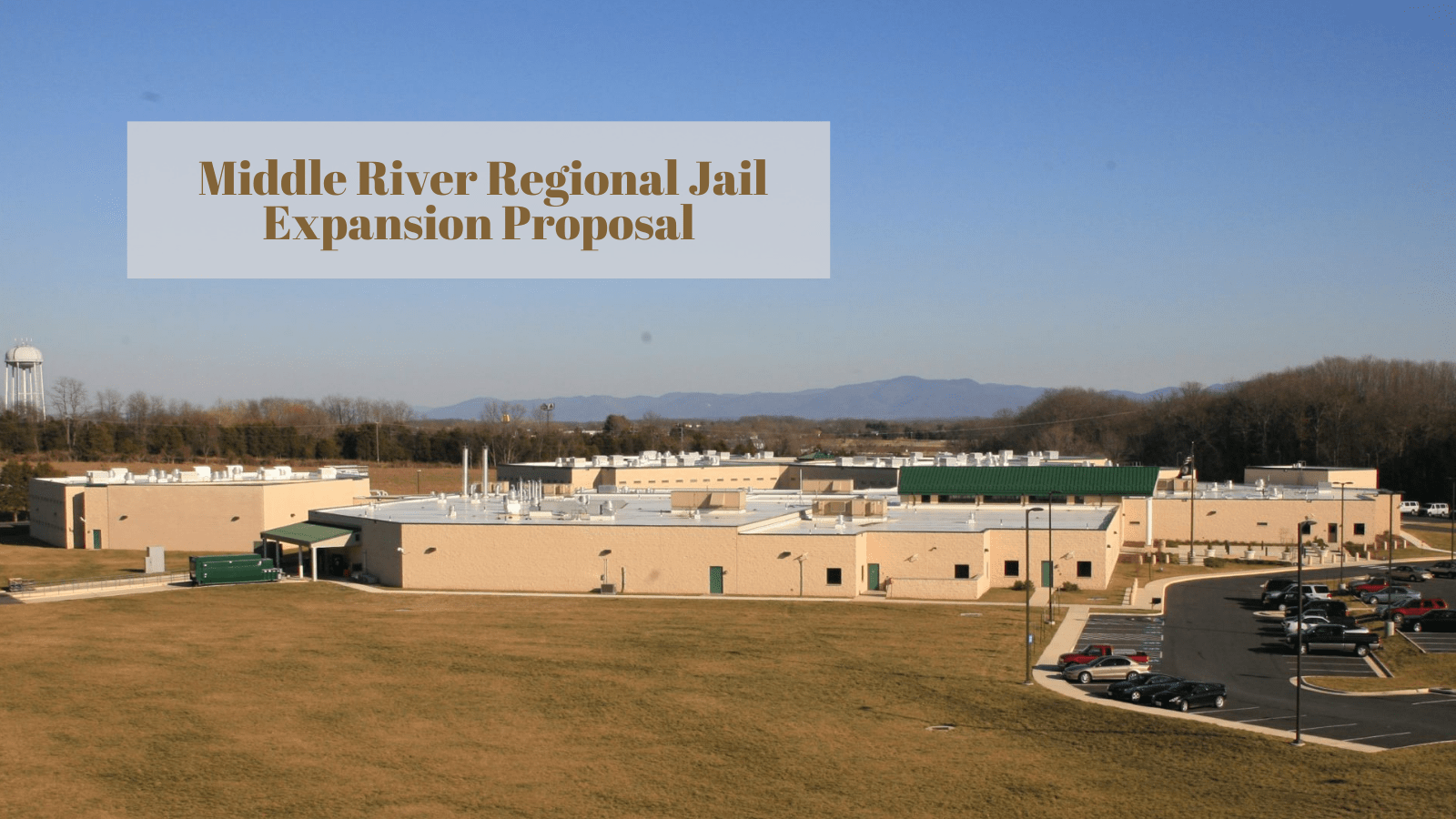Post by Drew Persinger, JMU ’21, Political Science, Campus Election Engagement Project Democracy Fellow
Background
Middle River Regional Jail is a detention facility located in Staunton, VA that serves Harrisonburg, Staunton, Waynesboro, and the counties of Augusta and Rockingham. The facility currently has a 902 bed capacity with approximately 212,020 sq. ft. In the fiscal year 2019, Harrisonburg paid $1 million to the jail for debt service and operating expenses.
Proposal
On Monday, January 25th, the Jail Superintendent, Jeffery Newton, presented an expansion plan with a total cost of $39.5 million to the Harrisonburg City Council. The proposed plan would add an additional 352 beds, a larger medical clinic, new laundry center, along with multiple other upgrades. Newton claims that the current jail is insufficient for their current population which fluctuates between 800 to 1000 inmates. The total cost increase for Harrisonburg City would be approximately $1.2 million annually. In order for the expansion to be approved, the project must be approved by a vote of 4 out of 5 of the localities. Currently, the jail board is preparing to take their expansion proposal to a vote.
On Tuesday, February 9, Frank Sottaceti, the Community Criminal Justice Planner, made a presentation to Harrisonburg City Council. In his presentation, he noted that there is a need for a paradigm shift, which would include increasing the City’s investment in the community and its residents in order decrease the numbers of individuals in the criminal justice system. He emphasized the need for employment and job/skills training; medical and mental health support; education; and human services programs.
Considerations
Over-Incarceration Epidemic
 Virginia’s incarceration rates stand out internationally. Virginia has an incarceration rate of 779 per 100,000 people (including prisons, jails, immigration detention, and juvenile justice facilities), meaning that it locks up a higher percentage of its people than many wealthy democracies do.
Virginia’s incarceration rates stand out internationally. Virginia has an incarceration rate of 779 per 100,000 people (including prisons, jails, immigration detention, and juvenile justice facilities), meaning that it locks up a higher percentage of its people than many wealthy democracies do.
Local Jail Incarceration rates: This is data reflective of local incarceration rates in localities that are served by Middle River Regional Jail.
- Virginia Median Local Average Incarceration Rate: 1.92 per 1,000
- Harrisonburg Local Incarceration Rate: 2.99 per 1000
- Staunton Local Incarceration Rate: 6.74 per 1,000
- Waynesboro Local Incarceration Rate: 5.13 per 1,000
Augusta County Local Incarceration Rate: 4.3 per 1,000 - Rockingham Local Incarceration Rate: 4.44 per 1,000
Resources:
Discussion: What alternatives to incarceration might be considered?
State Department of Correction Failure
Approximately 300 inmates are currently jailed with the designation of “state-responsible” which means their status and transfer schedule is determined by the Virginia Department of Corrections. The Virginia Department of Corrections pays the jail $4 a day per state-responsible inmate. However, it costs about $56 a day to house an inmate according to Newton. It is also not uncommon for these types of prisoners to serve the majority or entirety of their sentence at the expense of MRRJ.
Discussion: What is the role of VA DOC to work with communities on criminal justice reforms and alternatives to incarceration? What can local sheriffs and commonwealth attorneys do independently to reduce our incarceration rates?
Racial Implications
There is a disproportionate number of Black individuals incarcerated at the Middle River Jail facility. As of January 24, 2021, 22% of the jail’s inmates are Black according to data obtained by a Freedom of Information Act request by Communities Against Middle River Jail Expansion. According to U.S Census Bureau Information, 6% of the population of the jurisdictions is Black.
Discussion: Before approving an expansion and funding increase, should local governments examine underlying causes for racial disparities in incarceration and focus on addressing root causes?
Inhumane Conditions
Overcrowding prisons can result in an inhumane quality of life for those who are incarcerated, including unsanitary living environments, personal safety and security compromises, and insufficient medical facilities and attention.
Discussion: How would any expansion and increase of funds contribute to bettering conditions for those who are incarcerated?


Recent Comments